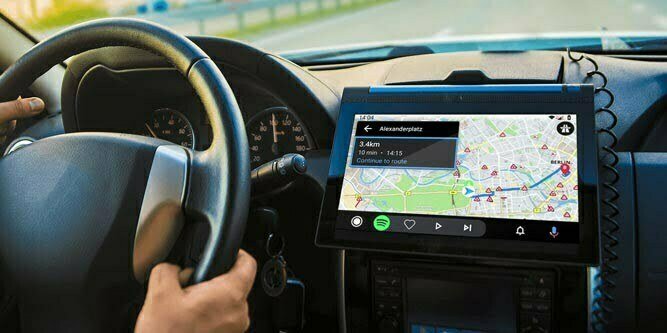Gone are the times we all used to imagine vehicles telling the exact location of your destination and the possible routes to get there! It’s all real now and even more advanced. With modern technologies being integrated extensively into vehicles, automotive navigation systems can now provide the most favorable route maps for people to reach their desired destination. Nowadays, this system mostly comes as a built-in feature of vehicles accompanied by voice-operated guidance that tells you exactly which route to follow!
The rapidly increasing vehicle fleet & traffic congestions globally, especially across urban areas, are propelling the demand for vehicle navigation systems for drivers to get real-time information about routes, traffic, maps, etc., attained through Global Positioning System (GPS). Modern car navigation solutions feature 3D maps, real-time traffic information, voice assistance, online & offline location search, and OTA (Over-the-Air) updates, among others. These systems are undergoing significant changes, and a fully autonomous driving experience is likely in the years ahead, say the experts in the automotive sector, wherein a driver would enjoy the drive just like passengers without even having to check the road.
As advanced technologies like Artificial Intelligence (AI) & the Internet of Things (IoT) are being integrated into in-car navigation systems to enhance the overall driving experience, more and more automakers are deploying these systems into their models. Hence, with these trends, a research study published by MarkNtel Advisors has predicted around 8% CAGR for the Global Automotive Navigation System Market during 2022-27. The mounting penetration of connected cars equipped with advanced safety features, coupled with the increasing popularity of car-sharing services, would further flood the market with lucrative prospects in the nearer future.

A Brief about Different Roles of Automotive Navigation Systems
The growth of the automotive industry has been majorly due to the increased purchasing power of consumers, along with the rapid surge in private ownership of vehicles. We all know that the number of personal vehicles has increased worldwide and with it, the traffic has also grown! The growing population requires real-time traffic data that can help them navigate the best routes accurately & efficiently, and that is what the navigation system does!
One might think that road data is the only thing an automotive navigation system provides, but there’s more to it! It gives information about fuel pumps along the route, notifies all restaurants, hotels, & cafes along the way, constantly updates the traffic situation, and even provides alternative routes.
The Incorporation of AI & IoT into Automotive Navigation Systems
Remember when we could only see road maps on cars in a James Bond movie? Well, it’s a reality for almost every car now! Technologies like Artificial Intelligence (AI) and the Internet of Things (IoT) have been incorporated into automotive navigation systems to optimize the driving experience. Advanced navigation systems also use Augmented Reality (AR) to improve the quality, offer multimedia support, and to even update the Full Self-Driving (FSD) software into the latest designs.
Commercial vehicles require proper technological support for activities, including construction, mining, transportation, and logistics. The advanced navigation systems featuring turn-by-turn directions and accessible inputs for enhanced driver’s assistance have thus become mandatory. Additionally, Automotive Navigation Systems are also gaining popularity due to the significant attraction towards the idea of connected cars and improved security features.
The future of automotive navigation systems will depend on further developments in different technologies, such as Artificial Intelligence, Computer Vision, Cognitive Computing, Augmented Reality, IoT, & Big Data, among others, implemented in next-gen vehicles. These innovations are set to make autonomous cars the primary means of transportation in the future ahead.
The leading vehicle brands worldwide already have either working prototypes or concepts of their driverless vehicles. To meet customer requirements & the superior quality of integrated navigation software, automakers are actively working on delivering the same functionality & mobility of their embedded car navigation systems. Therefore, these trends indicate profitable avenues for the Automotive Navigation System Market in the coming years, where these systems would be closer to reality and more accurate in route planning.














